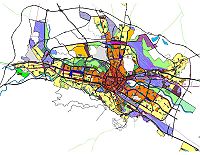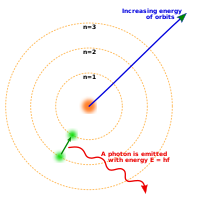
Vision for action and perception elicit dissociable adherence to Weber’s law across a range of ‘graspable’ target objects
Sign Up to like & getrecommendations! Published in 2017 at "Experimental Brain Research"
DOI: 10.1007/s00221-017-5025-1
Abstract: A number of studies have reported that grasps and manual estimations of differently sized target objects (e.g., 20 through 70 mm) violate and adhere to Weber’s law, respectively (e.g., Ganel et al. 2008a, Curr Biol 18:R599–R601)—a… read more here.
Keywords: target; weber law; target objects; range ... See more keywords

Biomechanical constraints do not influence pantomime-grasping adherence to Weber’s law: A reply to Utz et al. (2015)
Sign Up to like & getrecommendations! Published in 2017 at "Vision Research"
DOI: 10.1016/j.visres.2016.09.018
Abstract: ABSTRACT Work by our group and others employed the within‐participants variability in peak grip aperture as a ‘just‐noticeable‐difference’ (JND) in grasping. Notably, our group reported that grasping responses with decoupled spatial relations between stimulus and… read more here.
Keywords: law; adherence weber; utz 2015; object size ... See more keywords

The mechanistic foundation of Weber’s law
Sign Up to like & getrecommendations! Published in 2019 at "Nature Neuroscience"
DOI: 10.1038/s41593-019-0439-7
Abstract: Although Weber’s law is the most firmly established regularity in sensation, no principled way has been identified to choose between its many proposed explanations. We investigated Weber’s law by training rats to discriminate the relative… read more here.
Keywords: mechanistic foundation; law; intensity; foundation weber ... See more keywords

Bimanual grasping does not adhere to Weber’s law
Sign Up to like & getrecommendations! Published in 2017 at "Scientific Reports"
DOI: 10.1038/s41598-017-06799-4
Abstract: According to Weber’s law, a fundamental principle of perception, visual resolution decreases in a linear fashion with an increase in object size. Previous studies have shown, however, that unlike for perception, grasping does not adhere… read more here.
Keywords: adhere weber; grasping adhere; law; perception ... See more keywords

Visual complexity of egg patterns predicts egg rejection according to Weber's law
Sign Up to like & getrecommendations! Published in 2022 at "Proceedings of the Royal Society B: Biological Sciences"
DOI: 10.1098/rspb.2022.0710
Abstract: Visual complexity is ubiquitous in nature. Drivers of complexity include selection in coevolutionary arms races between antagonists. However, the causes and consequences of biological complexity and its perception are largely understudied, partly because complexity is… read more here.
Keywords: egg; according weber; visual complexity; rejection ... See more keywords

Grasping follows Weber's law: How to use response variability as a proxy for JND
Sign Up to like & getrecommendations! Published in 2022 at "Journal of Vision"
DOI: 10.1167/jov.22.12.13
Abstract: Weber's law is a fundamental psychophysical principle. It states that the just noticeable difference (JND) between stimuli increases with stimulus magnitude; consequently, larger stimuli should be estimated with larger variability. However, visually guided grasping seems… read more here.
Keywords: jnd; variability; response; law ... See more keywords

Weber’s Law based Camera Response Model for Low Light Image Contrast Enhancement
Sign Up to like & getrecommendations! Published in 2019 at "International Journal of Intelligent Engineering and Systems"
DOI: 10.22266/ijies2019.1031.04
Abstract: In the field of digital image processing, Image Contrast Enhancement (ICE) is an emerging research area, which helps to attain the sub-standard quality images. The existing ICE techniques have a few limitations like brightness preservation… read more here.
Keywords: image; contrast; contrast enhancement; method ... See more keywords

Perception is Analog: The Argument from Weber's Law
Sign Up to like & getrecommendations! Published in 2019 at "The Journal of Philosophy"
DOI: 10.5840/jphil2019116621
Abstract: In the 1980s, a number of philosophers argued that perception is analog. In the ensuing years, these arguments were forcefully criticized, leaving the thesis in doubt. This paper draws on Weber’s Law, a well-entrenched finding… read more here.
Keywords: perception analog; weber law; argument; perception ... See more keywords